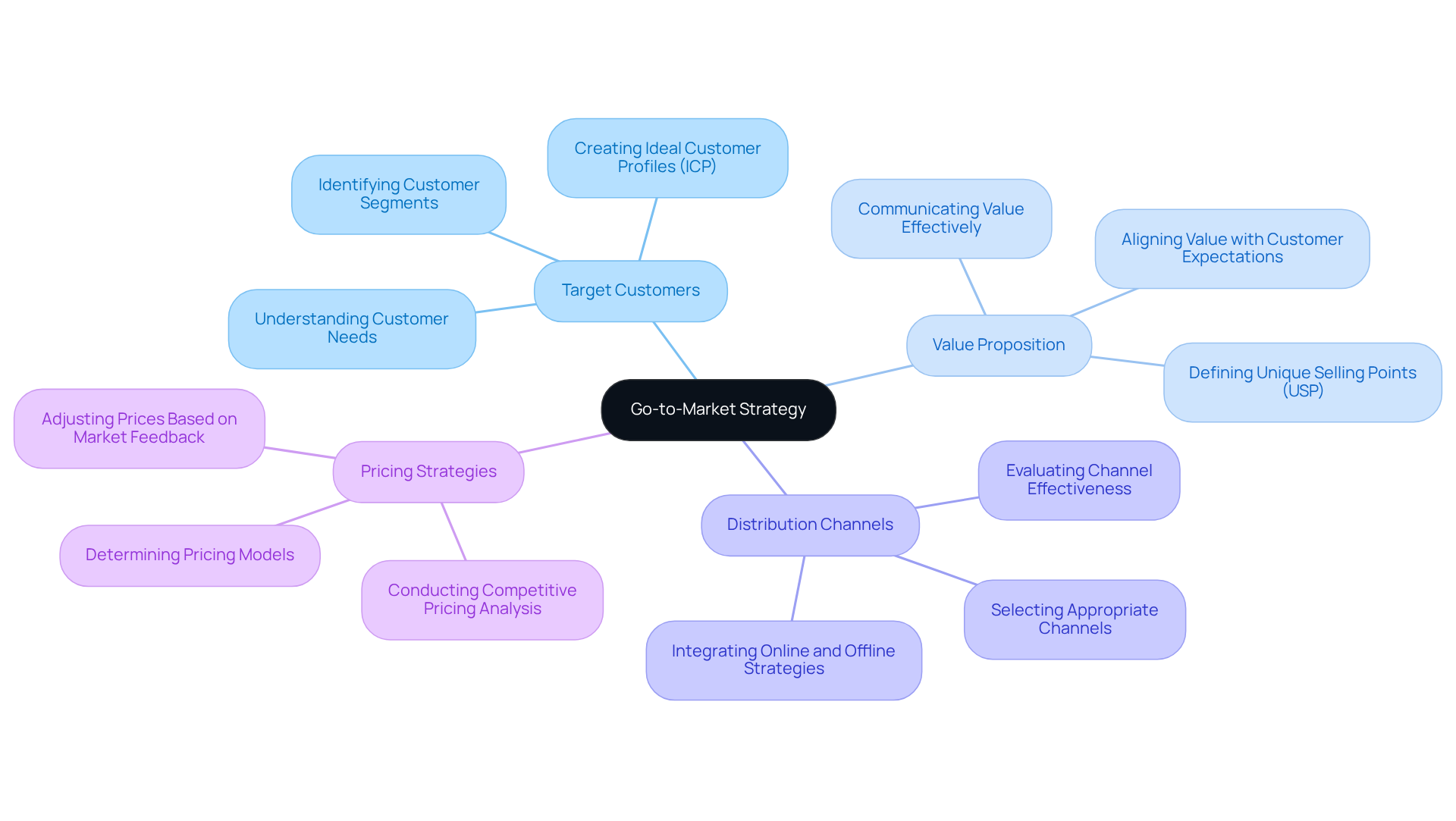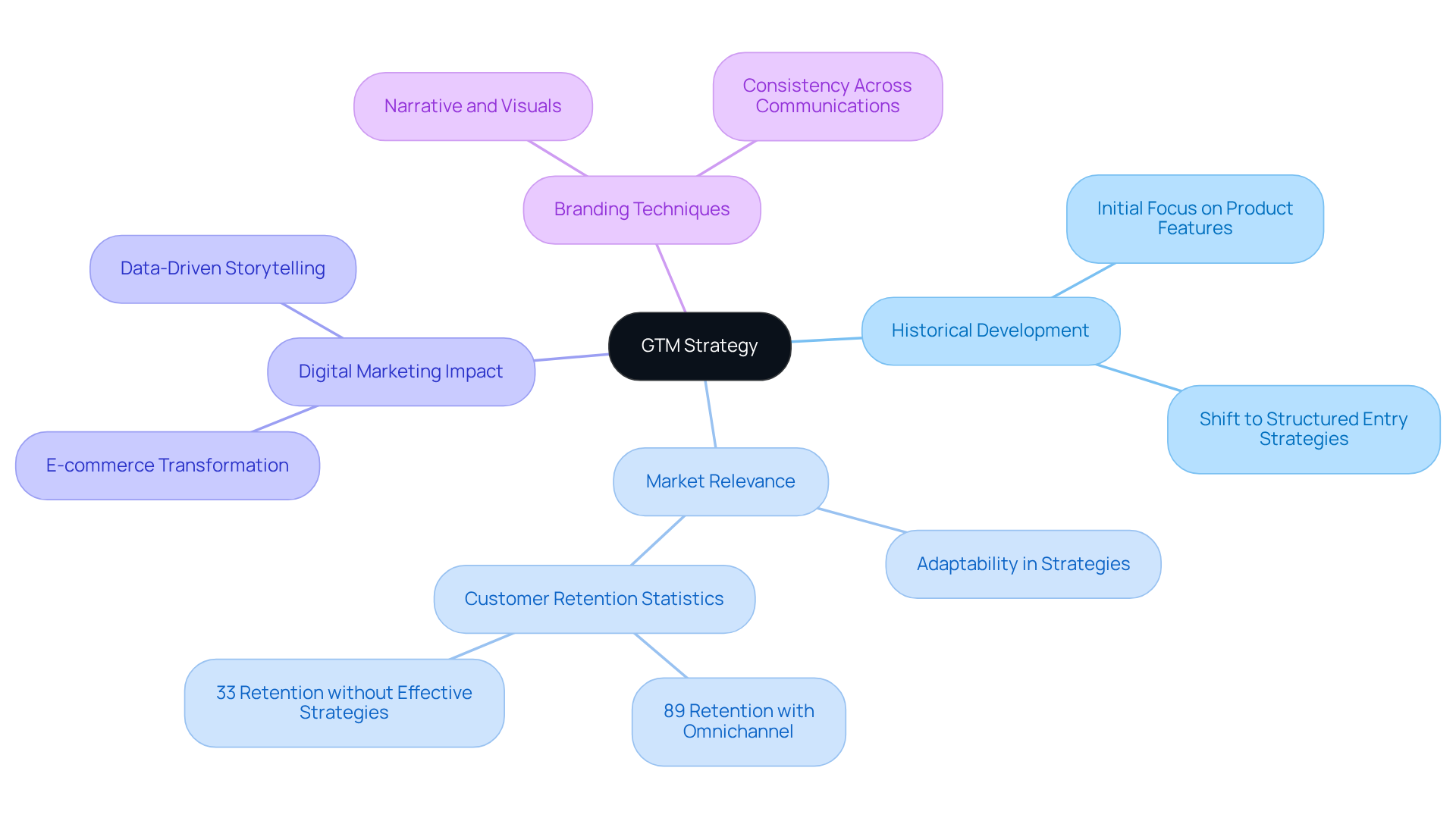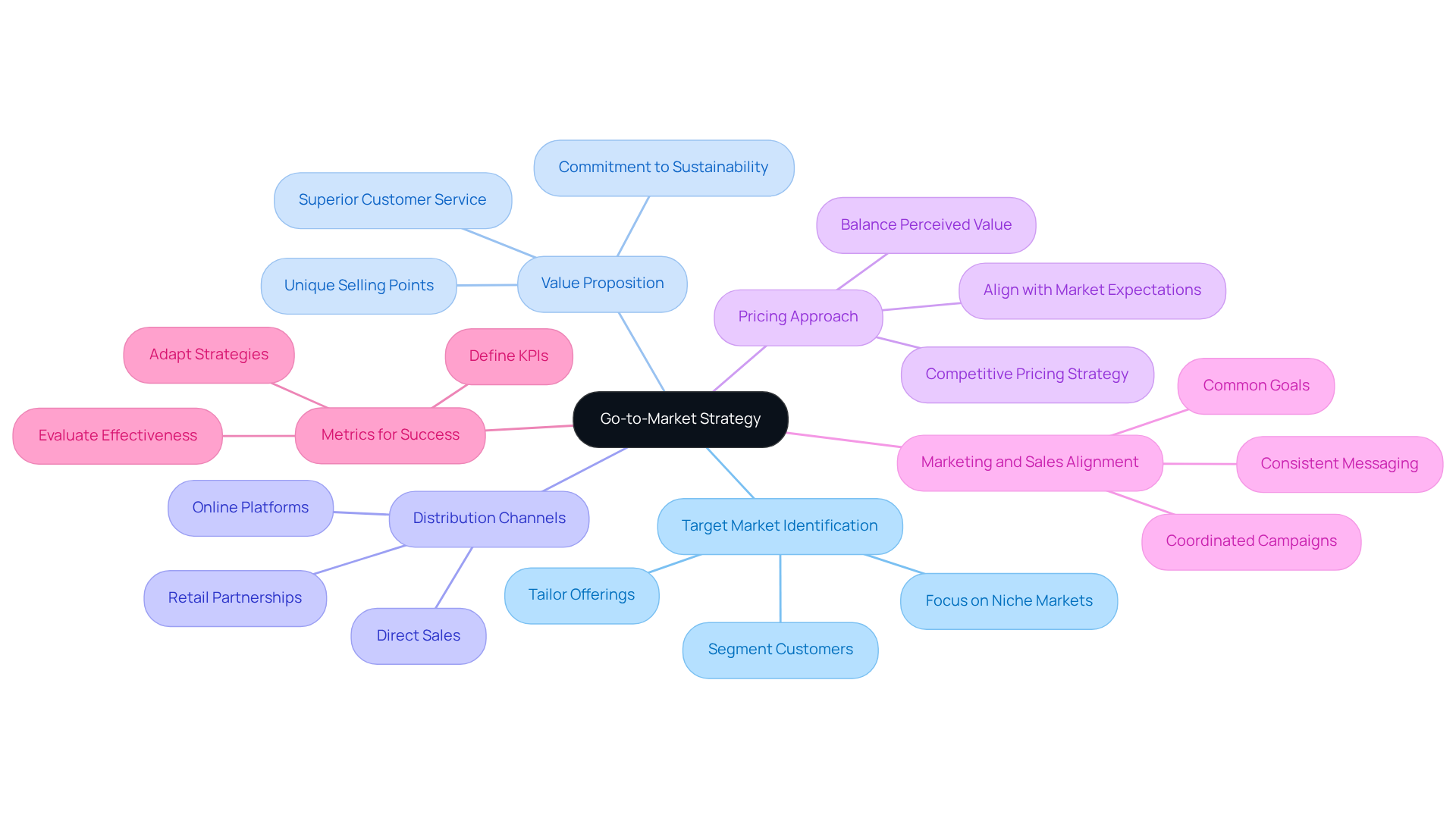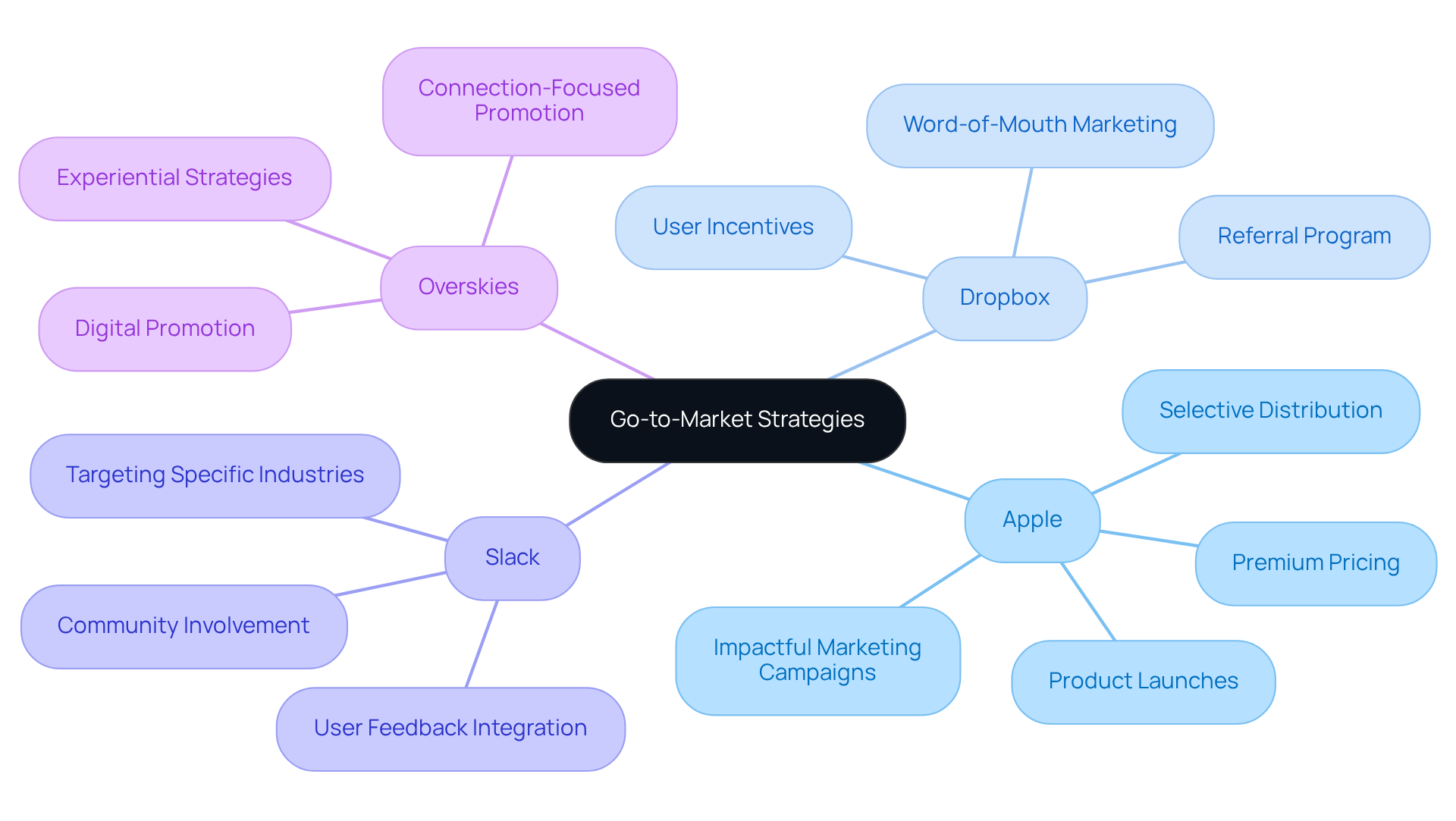Introduction
Understanding the complexities of a go-to-market (GTM) strategy is crucial for any business aiming to effectively introduce a new product or service. This strategic framework not only clarifies the path to market but also enhances a company's ability to engage target customers and maximize return on investment. As competition intensifies and consumer preferences evolve, what does it truly mean to have a successful GTM strategy?
Exploring its core components and real-world applications reveals the challenges and opportunities inherent in this critical business approach. Companies must navigate these dynamics to thrive in a rapidly changing marketplace. By grasping the intricacies of GTM strategies, businesses can position themselves for success and capitalize on emerging trends.
In this article, we will delve deeper into the essential elements of a GTM strategy, providing valuable insights that can empower your organization to excel. Don't miss the chance to enhance your market presence and drive growth.
Define Go-to-Market Strategy: Core Concepts and Importance
A go-to-market (GTM) approach is a strategic blueprint that helps clarify what does go to market mean for a company introducing a new product or service effectively. This plan encompasses critical components such as:
- Identifying target customers
- Defining the value proposition
- Selecting distribution channels
- Determining pricing strategies
At Overskies, we understand that a meticulously crafted GTM plan is vital for aligning promotional and sales efforts, ensuring that all stakeholders are united in pursuit of a common objective. Our extensive GTM offerings cover every aspect, from research and positioning to creative production and experiential promotion, ensuring your upcoming launch targets the right audience and delivers a favorable return.
Understanding what does go to market mean is crucial, as the importance of a GTM plan lies in its ability to enhance a company's chances of success by providing a clear roadmap for effectively reaching and engaging customers. By leveraging cutting-edge solutions like photogrammetry and AI-generated environments, companies can create high-quality, cost-effective visuals that maximize ROI across diverse channels. This approach not only accelerates go-to-market timelines but also facilitates rapid updates to seasonal campaigns and localized content, all while minimizing production costs. With Overskies' expertise, you can ensure that your brand's marketing efforts are both impactful and efficient.

Contextualize GTM Strategy: Historical Development and Market Relevance
The evolution of go-to-entry (GTE) approaches marks a significant shift in how companies navigate new markets. Initially, the emphasis lay heavily on product features and pricing. Yet, as competition has intensified and consumer preferences have shifted, the need for a structured entry strategy has become undeniable. The rise of digital marketing and e-commerce has dramatically reshaped go-to-market (GTM) strategies, highlighting the importance of understanding what does go to market mean in terms of customer journeys and engagement touchpoints.
Today, effective GTM strategies are defined by their adaptability and responsiveness to rapid market changes. For instance, businesses leveraging digital channels can enhance customer interaction and loyalty. Studies reveal that organizations with robust omnichannel strategies retain 89% of their clients, compared to just 33% for those with less effective methods. Moreover, case studies indicate that companies implementing comprehensive strategies, which relates to what does go to market mean, during product launches are 60% more likely to achieve their revenue targets within a year. This adaptability is essential in a fast-paced environment where consumer expectations are in constant flux, emphasizing what does go to market mean in integrating digital marketing into GTM frameworks.
At Overskies, we understand that effective branding transcends mere aesthetics; it’s about narrating your unique story through compelling visuals that resonate with your audience. Our approach merges strategic design with analytics, ensuring that every asset we create not only captures attention but also drives engagement throughout the consumer journey. We apply the 12 principles of design to craft visuals that speak to the right audience and elicit a response. Additionally, we establish guidelines to maintain consistency across all visual communications.
In the e-commerce landscape, where consumer-brand relationships are vital, navigating these dynamics is crucial. B2C organizations must adopt data-driven storytelling and prioritize marketing initiatives that align with evolving consumer expectations. By refining brand narrative techniques to tackle these challenges, companies can enhance their presence and foster stronger relationships with their customers.

Explore Key Components of a Go-to-Market Strategy: Framework and Elements
Understanding what does go to market mean is essential for developing a robust go-to-market strategy that ensures successful market entry and customer engagement. It encompasses several key components:
-
Target Market Identification: Understanding your ideal customers is crucial. Segment them based on demographics, behaviors, and specific needs. This effective identification allows businesses to tailor their offerings and messaging, resonating with distinct audience segments. Companies focusing on niche markets often see higher engagement and conversion rates, as they effectively address specific pain points.
-
Value Proposition: A compelling value proposition is vital. It defines what makes your product or service unique and why customers should choose it over competitors. Successful brands emphasize their commitment to sustainability or superior customer service, significantly influencing purchasing decisions.
-
Distribution Channels: Selecting the right channels to reach your target audience is critical. Whether through direct sales, online platforms, or retail partnerships, the choice of distribution impacts visibility and accessibility. Companies leveraging multiple channels achieve broader reach and enhanced customer interaction.
-
Pricing Approach: Establishing a competitive pricing strategy is essential for profitability while attracting customers. This requires balancing perceived value with market expectations, ensuring pricing aligns with the target audience's willingness to pay.
-
Marketing and Sales Alignment: Coordinating marketing campaigns with sales plans maximizes impact. This alignment ensures consistent messaging and that both teams work towards common goals, enhancing overall effectiveness.
-
Metrics for Success: Defining key performance indicators (KPIs) is essential for assessing the effectiveness of your go-to-market plan. Consistently evaluating these metrics enables companies to make informed modifications, ensuring approaches remain relevant and efficient in a changing business landscape.
By concentrating on these elements, businesses can develop a comprehensive strategy and understand what does go to market mean, which not only identifies and engages their target audience but also clearly conveys their unique value proposition. This ultimately fosters success in competitive environments. Take action now to refine your strategy and achieve your market goals.

Examine Real-World Examples: Successful Go-to-Market Strategies in Action
Several companies have successfully implemented go-to-market strategies that serve as excellent case studies:
-
Apple: Renowned for its meticulous product launches, Apple combines a compelling value proposition with impactful marketing campaigns that generate anticipation and demand. Their GTM approach emphasizes premium pricing and selective distribution channels, enhancing brand prestige and consumer desirability. For instance, Apple's product launches often attract significant media attention, contributing to a strong initial sales performance.
-
Dropbox: Initially, Dropbox utilized a referral program as a cornerstone of its go-to-market approach, incentivizing users to invite others in exchange for additional storage space. This strategy effectively harnessed word-of-mouth marketing, enabling Dropbox to rapidly expand its user base and establish a strong market presence.
-
Slack: Slack's GTM approach concentrated on targeting specific industries while actively incorporating user feedback to enhance its product offerings. By prioritizing user experience and encouraging community involvement, Slack effectively established itself as a leader in team collaboration tools, leading to high user retention and loyalty.
These examples illustrate what does go to market mean by showing how customized approaches for entering the field can lead to substantial penetration and encourage lasting customer loyalty. Moreover, Overskies illustrates how connection-focused promotion and experiential strategies can enhance a company's visibility. Their insights into digital promotion and innovative approaches not only enhance visibility but also increase conversions, especially in competitive settings like Amazon and social media. Client testimonials further underscore Overskies' expertise in developing cohesive brand identities and go-to-market strategies that resonate with target audiences, showcasing their impact on brand storytelling and market effectiveness.

Conclusion
A well-defined go-to-market (GTM) strategy is essential for any company aiming to introduce a product or service effectively. To truly grasp what it means to go to market, one must recognize its core components:
- Identifying target customers
- Crafting a unique value proposition
- Selecting appropriate distribution channels
- Determining pricing strategies
Together, these elements form a strategic framework that aligns marketing and sales efforts, significantly enhancing the chances of a successful product launch.
Throughout this article, we've shared key insights into the evolution of GTM strategies, highlighting a pivotal shift from a product-centric approach to one that prioritizes customer engagement and adaptability. The integration of digital marketing into GTM frameworks is crucial, showcasing how businesses can leverage omnichannel strategies for improved customer retention and revenue generation. Real-world examples from companies like Apple, Dropbox, and Slack illustrate the effectiveness of tailored GTM approaches, demonstrating how strategic planning can lead to significant market penetration and foster customer loyalty.
In conclusion, developing a robust go-to-market strategy is not just a tactical decision; it’s a vital investment in a company’s future success. By focusing on the key components outlined in this article and adapting to the ever-changing market landscape, businesses can enhance their visibility and cultivate meaningful connections with their customers. Embracing the principles of a comprehensive GTM strategy empowers organizations to not only meet but exceed their market goals, ultimately driving long-term growth and sustainability. Take action now-refine your GTM strategy and position your company for unparalleled success.
Frequently Asked Questions
What is a go-to-market (GTM) strategy?
A go-to-market (GTM) strategy is a strategic blueprint that helps a company effectively introduce a new product or service. It includes critical components such as identifying target customers, defining the value proposition, selecting distribution channels, and determining pricing strategies.
Why is a GTM plan important?
A GTM plan is important because it enhances a company's chances of success by providing a clear roadmap for effectively reaching and engaging customers. It aligns promotional and sales efforts, ensuring that all stakeholders are united in pursuit of a common objective.
What are the key components of a GTM strategy?
The key components of a GTM strategy include identifying target customers, defining the value proposition, selecting distribution channels, and determining pricing strategies.
How can companies leverage technology in their GTM strategy?
Companies can leverage technology by using solutions like photogrammetry and AI-generated environments to create high-quality, cost-effective visuals that maximize ROI across diverse channels. This approach also facilitates rapid updates to seasonal campaigns and localized content while minimizing production costs.
What services does Overskies offer related to GTM strategies?
Overskies offers extensive GTM services that cover every aspect from research and positioning to creative production and experiential promotion, ensuring that product launches target the right audience and deliver a favorable return.
.png?width=250&height=153&name=CSI-OverskiesRebrand_LOGO-01(smaller).png)

.png?width=100&height=61&name=CSI-OverskiesRebrand_LOGO-01(smaller).png)


.png?width=88&name=CSI-OverskiesRebrand_LOGO-01(smaller).png)



